Trans Siberian Railway journey from Singapore to Moscow
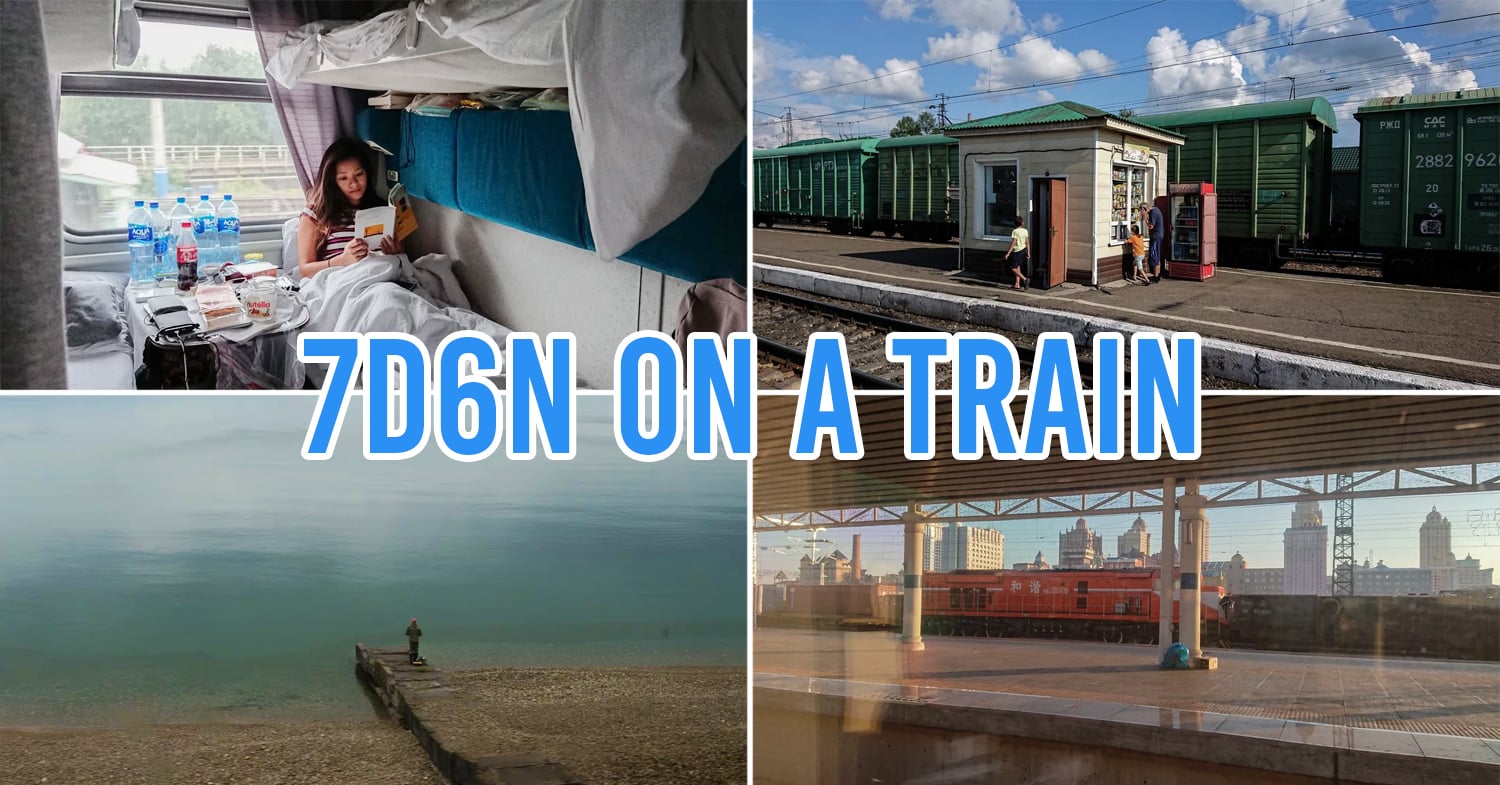
What would you do with a lot of time, a little bit of savings, and a desire for adventure?
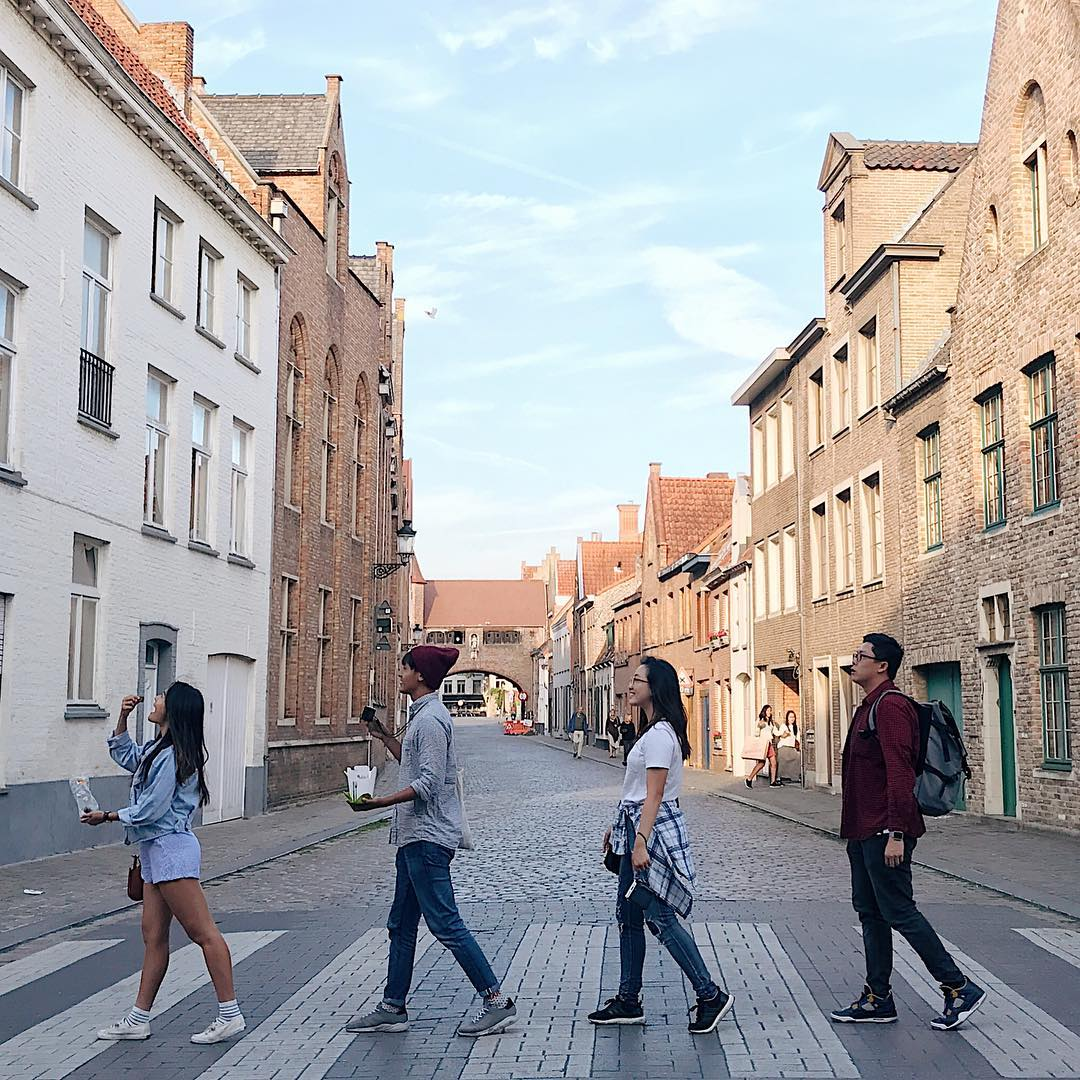
Image credit: @jinxyoo
4 millenials from TSL – 19, 21, 22, and 25 years old respectively – recently went on a once-in-a-lifetime trip from Singapore to Moscow purely on land, with trains and buses as our main modes of transport as we crossed the continent.
If this epic adventure is calling your name, and you’re reading to pack your bags and leave stat, this article compiles all the information you’ll otherwise gather from hours of painstaking research.
The entire trip took more than 3 weeks, making us miss home incredibly, but it’s an experience not to be missed. Travelling to Europe is one thing. Travelling to Europe via the Trans Siberian? That’s a completely next-level adventure.
This trip is the result of a challenge by SONY Singapore, who challenged us to reach London without setting foot on a plane, while capturing all our videos and images on a SONY Xperia XZ Premium.
Pre-trip considerations
1. Life-saving train essentials
The Trans-Siberian Railway is a whole 7-day journey, so make sure to pack enough necessities! Here are some things we brought along that saved our lives, as well as some that we found out we needed waaay too late.
1. Wet wipes – lots and lots of them, because you’ll barely get to shower
2. Mugs – Hot water is free on the train, but no cups are provided. These will come in handy if you bring tea bags and coffee packets.
3. E-book reader – My Kindle was a lifesaver. I completed 3 books in the 7 days!
4. Soap – for whatever chances you have to shower on board
5. Many packets of Instant noodles – Quick + cheap hunger fix
6. Utensil kit – To use when you eat your instant noodles
7. Extension cable – There are only 2 power points in each train carriage; bring an extension cable so you can charge multiple devices at the same time.
2. If you’re Singaporean, apply for a Russian visa online
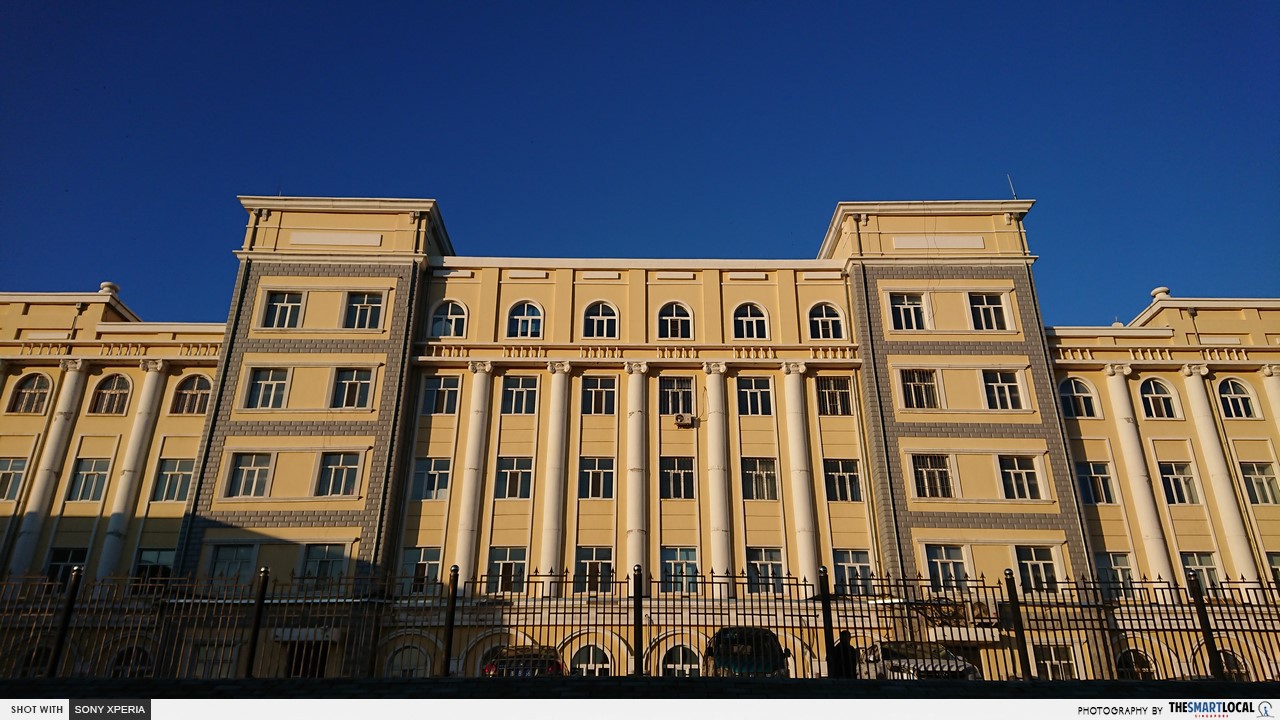
Alas, the mighty Singaporean passport does not prevail in Russia. All visitors with Singaporean passports must apply for a visa prior to their arrival in Russia, or else they will be rejected entry. Don’t be silly enough to travel all the way to Beijing only to be denied entry at the railway station. It ain’t worth it.
The process for VISA application to Russia usually takes about 2 weeks, but if you’re in a hurry, you can pay a premium to speed up the process to a week. Remember to take into account Russian public holidays those will delay the process.
After filling up and signing all the forms, you’d have to book an appointment and head down to the Russian Visa Application Centre to submit them. The document checks are extremely stringent so make sure to read and follow all the guides of submissions carefully.
You can find details on how to apply for a visa here. Some countries are categorised under the “Visa-free Regime” category in Russia, so if you aren’t Singaporean, you can check the full list of passports that don’t require Russian visas here.
3. Purchase a Trans Siberian ticket that costs S$800/pax one-way
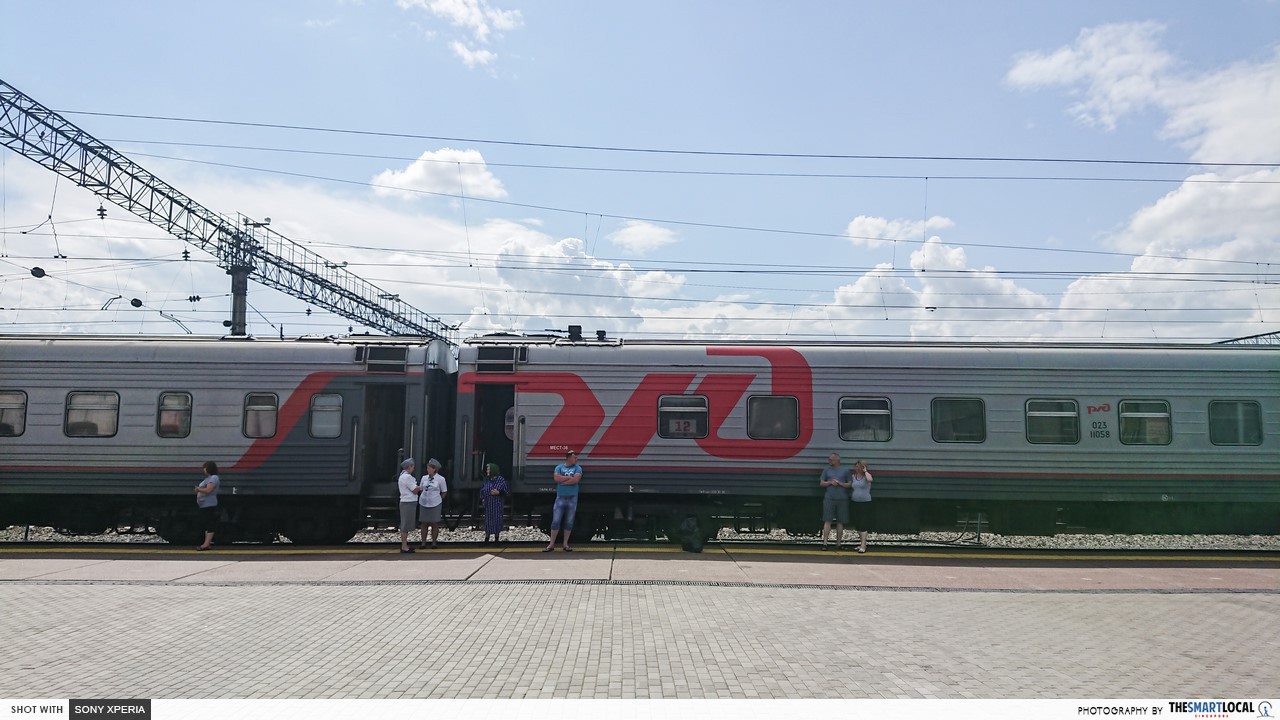
… And that’s if you choose the 2nd class (4-people) cabins. There are only 2 classes to choose from on the K19 (the Beijing to Moscow route), and from what we observed, the only difference is that the first class cabin has 2 beds, not 4, giving you a little more privacy. The $400 price difference is practically a rip-off, especially if you’re travelling in a group!
The easiest way for Singaporeans will be to buy the tickets from Chinese travel agencies online (that’s what we did). We checked out plenty of agencies online, and booked our tickets from Travel China Guide. Alternatively, you can book from China Highlights.
Before you book your tickets, make sure you already have accommodation in Beijing, and book them at least 2 weeks in advance to secure a spot on board. Your hard-copy tickets will be mailed directly to wherever you’re staying from the travel agencies.
4. Experience the best weather in July-September
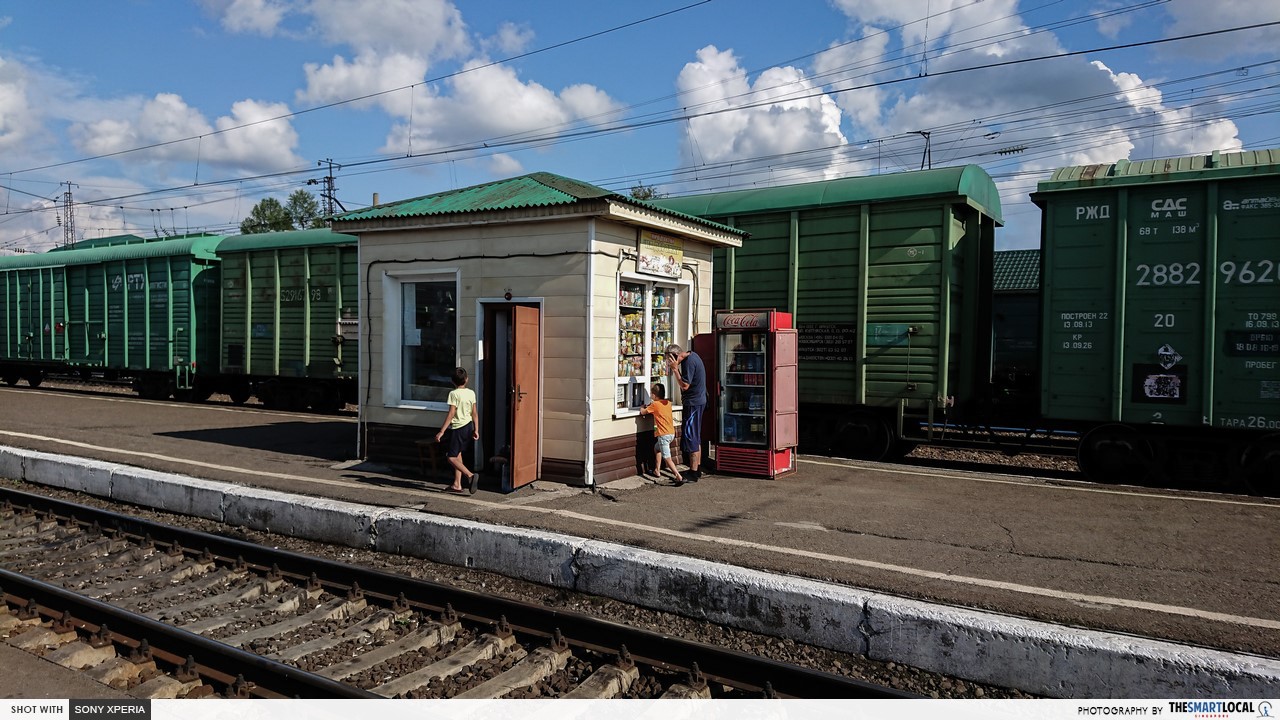
The bluest of skies will be between July to September
Unless you can withstand the -30°C air of Russia’s legendarily freezing winter months, the best time to get on the Trans Siberian (and into Russia) is between summer and autumn, from July to September. Temperatures range from 12 to 20°C then and this also means that you can ditch the massive loads of winter clothing like padded jumpers and wooly coats.
5. You’ll be 99% cut off from civilisation because there’s NO wifi+data for 7 days
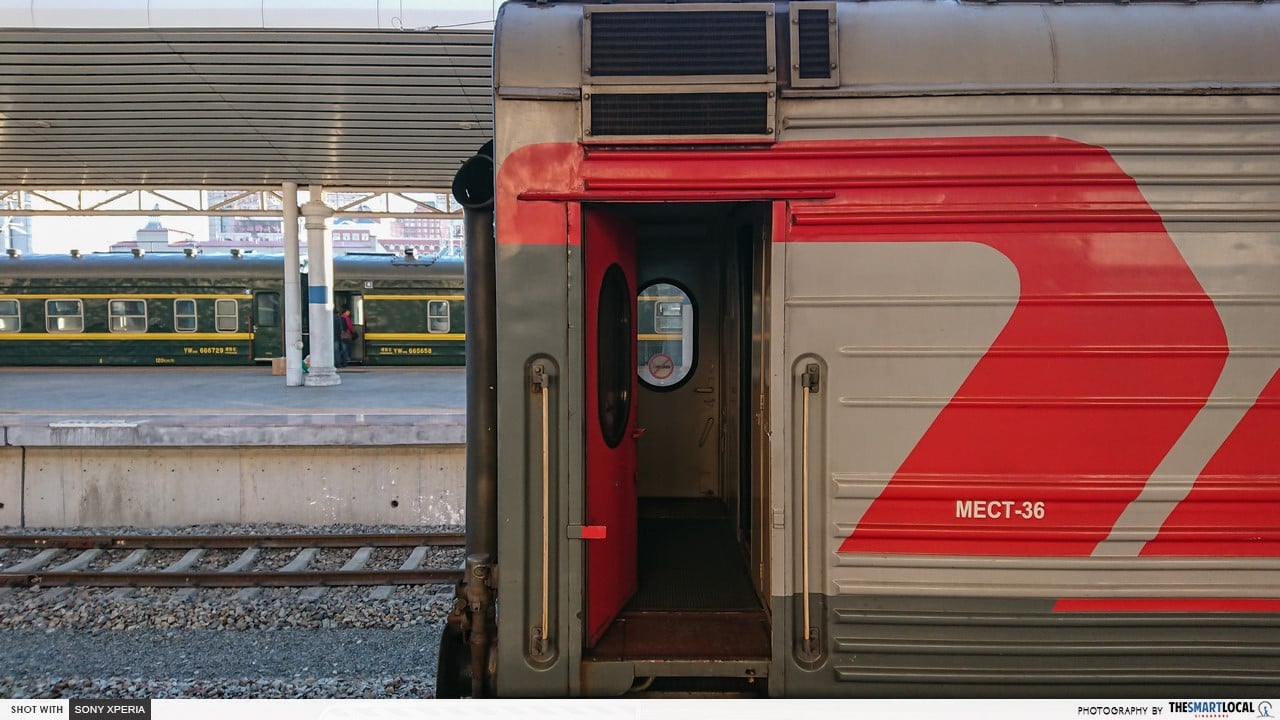
*Gasp* I know, 7 days without internet?! If you’re gonna feel FOMO, your best option is to invest in a portable wifi router before you leave Singapore (we got ours from Changi Recommends), but connection will be really bad on the train as you’ll constantly be moving across different timezones.
Those thinking of trying data roaming, I’ll tell you from experience – don’t. It’s simply not worth paying for, because cellular networks are barely detectable. Take the time to just disconnect for a week – write letters, doodle, read, and chit chat with people on board.
Just make sure to tell your loved ones that you’ll be uncontactable for a week so they don’t get too worried!
Important: Get ~S$300 of emergency cash ready
There aren’t ATMs along the stations after you leave Beijing. To be safe, change about $300-400 SGD to rubles before you get on board – that’s roughly 14,000-18,000 rubles.
You’ll need the cash for on-board meals and grocery shopping at some stops.
The “pre-trip” trip: Singapore to Beijing
Note: Book all tickets beforehand, unless indicated. We booked everything on 12go.asia.
#1: Singapore to Malaysia
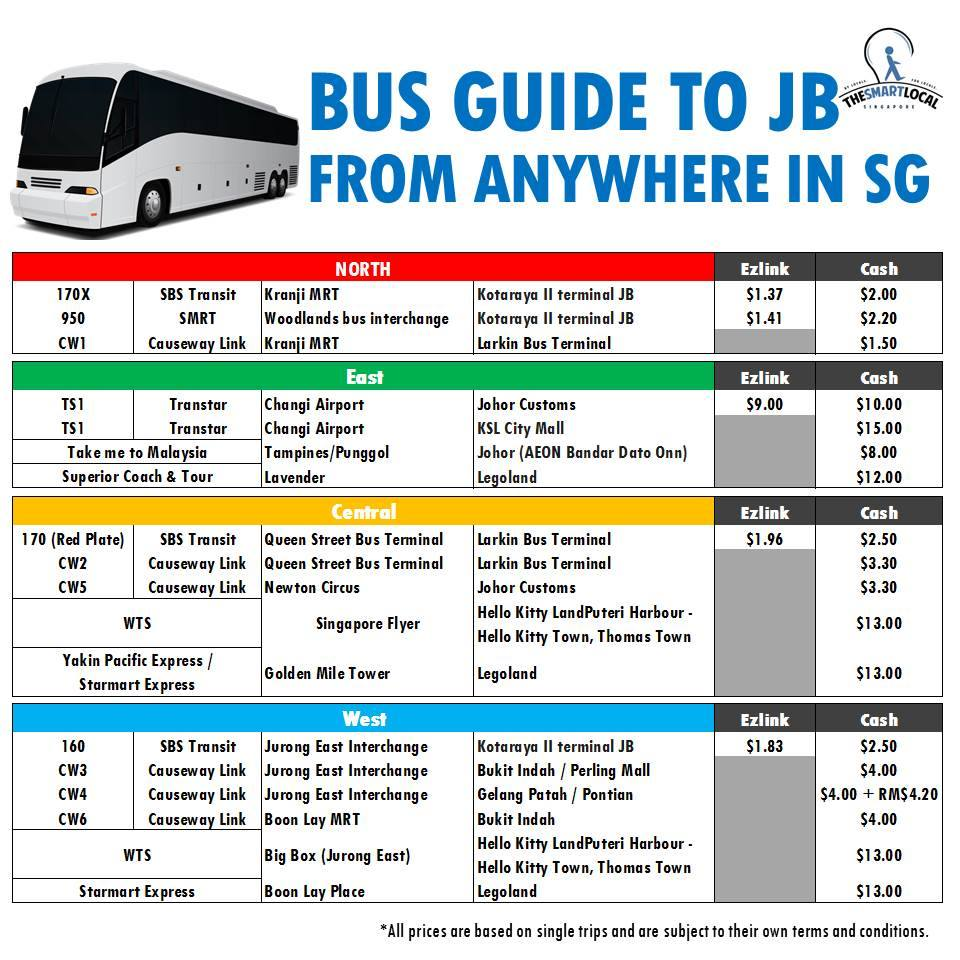
Image credit: The Smart Local Facebook
The journey from Singapore to Malaysia is very straightforward. Follow the above infographic and take a bus to Johor Bahru, and hop onto a KTM train from Johor Bahru Sentral to Gemas (S$7/pax). Then, take a connecting train to Kuala Lumpur (S$10/pax).
This will take about 7 hours in total.
You’ll need at least one night’s stay in Kuala Lumpur before you move on, so make sure you arrange for accommodation beforehand.
Total cost: S$17/pax
No. of tickets to book: 2 (Johor Bahru to Gemas, Gemas to Kuala Lumpur)
Buy tickets here
#2: Malaysia to Thailand
The journey from here to Bangkok, Thailand, takes two days – and in one train you’ll have to sleep overnight.
Whenever you’re ready to leave, take a KTM train from Kuala Lumpur to Padang Besar (S$25/pax), the border of Malaysia and Thailand. After ~2 to 3 hours, a Thai train will come along to take you to Bangkok (S$100/pax). This ride will be 16 hours long, so make yourself comfy!
Total cost: S$125/pax
No. of tickets to book: 2 (Kuala Lumpur to Padang Besar, Padang Besar to Bangkok)
Buy tickets here
#3: Thailand to Cambodia
The journey from Thailand to Cambodia is a little complicated, but nonetheless doable. It is impossible to book transport in this leg of the journey, so you’ll have to buy a train ticket on the spot at Hua Lamphong station in Bangkok to Aranyaprathet, the border of Thailand (48 Baht/pax). The train leaves at 5:55am every day, so go to the station by 5am to buy your ticket.
Cambodia uses US currency more than its own currency, so have some on hand! We referred to a great guide here for the rest of the journey on a tuk tuk and a minivan (which requires 100 Baht and US$10/pax), but skip over the Cambodian visa application process if you’re Singaporean. Singaporeans do not need a visa to enter Cambodia.
Warning: On this leg of the journey, we encountered a scam: towards the end of the ride, the driver insisted on not going into the city center itself, instead dropping us off about 3 kilometres away from the agreed drop-off point, where a row of tuk tuks were waiting to pick passengers up for an additional US$5 per person. We’re not sure if this can be avoided, but when in the situation, US$5 felt like a low price to pay for safety.
Total cost: approx. S$27/pax (148 Baht + US$15 )
No. of tickets to book: 0
#4: Cambodia to Vietnam
The journey from Cambodia to Vietnam is easy – just hop onto two very comfortable buses. The first bus will take you from Siem Reap to Phnom Penh, and the next goes from Phnom Penh to Ho Chi Minh, Vietnam (S$45/pax for both bus rides).
Take Giant Ibis Transport – they have very spacious leg space in the buses, and even offer bunk beds on the first bus!
Total cost: S$45/pax
No. of tickets to book: 2 (Siem Reap to Phnom Penh, Phnom Penh to Ho Chi Minh)
Buy tickets here
#5: Vietnam to Beijing
From Ho Chi Minh to Beijing, you take 2 train rides, and both are overnight trains. The first stretch takes you from Ho Chi Minh to Hanoi (from S$80/pax) – we recommend having a few nights’ stay in Hanoi before you move onto the Hanoi to Beijing train (S$465/pax). These trains have cabins and bunk beds, so don’t worry about having numb butts from hours of sitting.
To be honest, it’s way more practical to take a plane from Vietnam to Beijing, unless you’re determined to do the whole journey by land. Plane rides from Ho Chi Minh to Beijing start from S$180 only!
Total cost: S$545/pax
Buy tickets here
Total transport costs from Singapore to Beijing by land (5 countries): S$760
The REAL trip: Beijing to Moscow via the Trans Siberian through Manchuria
Get on board the train of every wanderluster’s dreams – The Trans Siberian from Beijing all the way to Moscow, a 7D6N journey crossing the whole continent of Asia over to Europe.
There are two routes one can take on the Trans Siberian.
- The route passing through Mongolia,
- Or the route going through Manchuria.
We chose the latter, but you can do either and even plan stopovers along the way.
1. Board the train at Beijing Railway Station
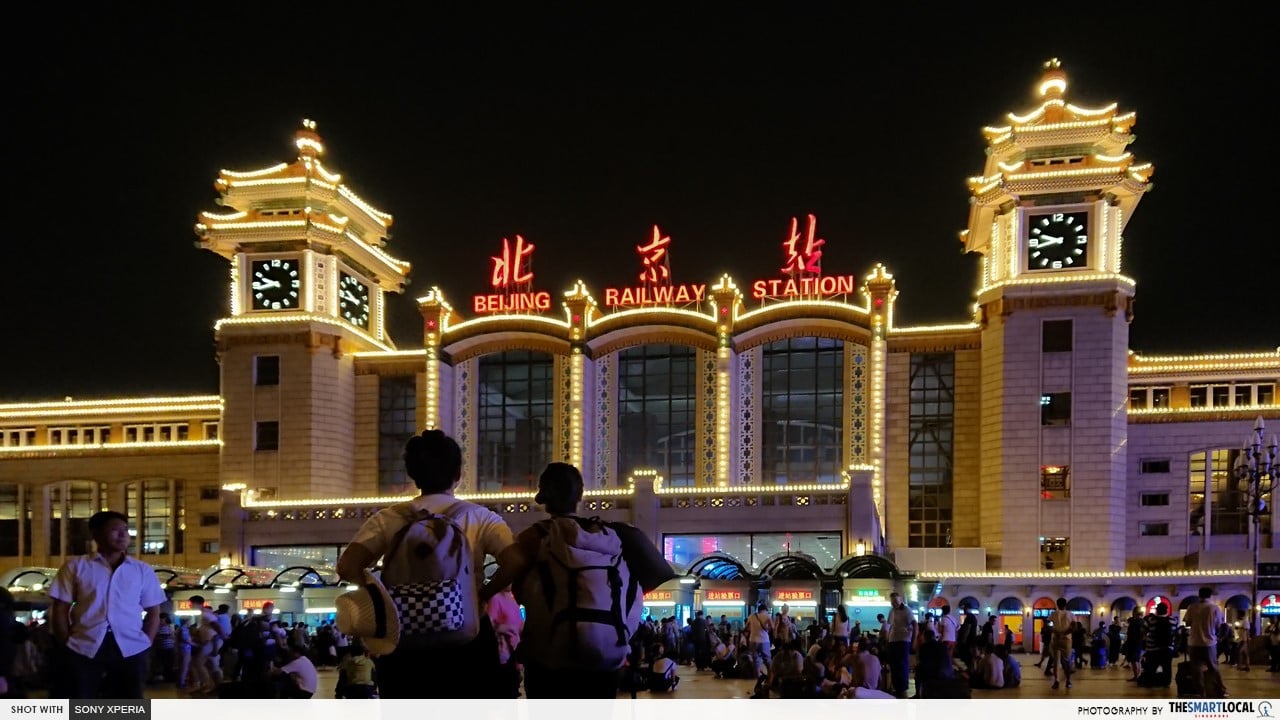
The Trans Manchurian train (K19) from Beijing leaves once a week on Saturdays only, at 11pm (Beijing time). You will reach Moscow on the following Friday at 6pm (Moscow time).
The station is Beijing Railway Station (北京站), which is easy to find as it’s the main railway station of the city and all cabbies will know it. You can also get there by metro.
Arrive by 10pm. The crowd at this station is ridiculously insane and you’ll need time to check in. There will be passport and bag checks before you enter, so treat it like as if you’re entering an airport – sharp objects and harmful substances are not allowed in.
2. This is what the inside of the train looks like
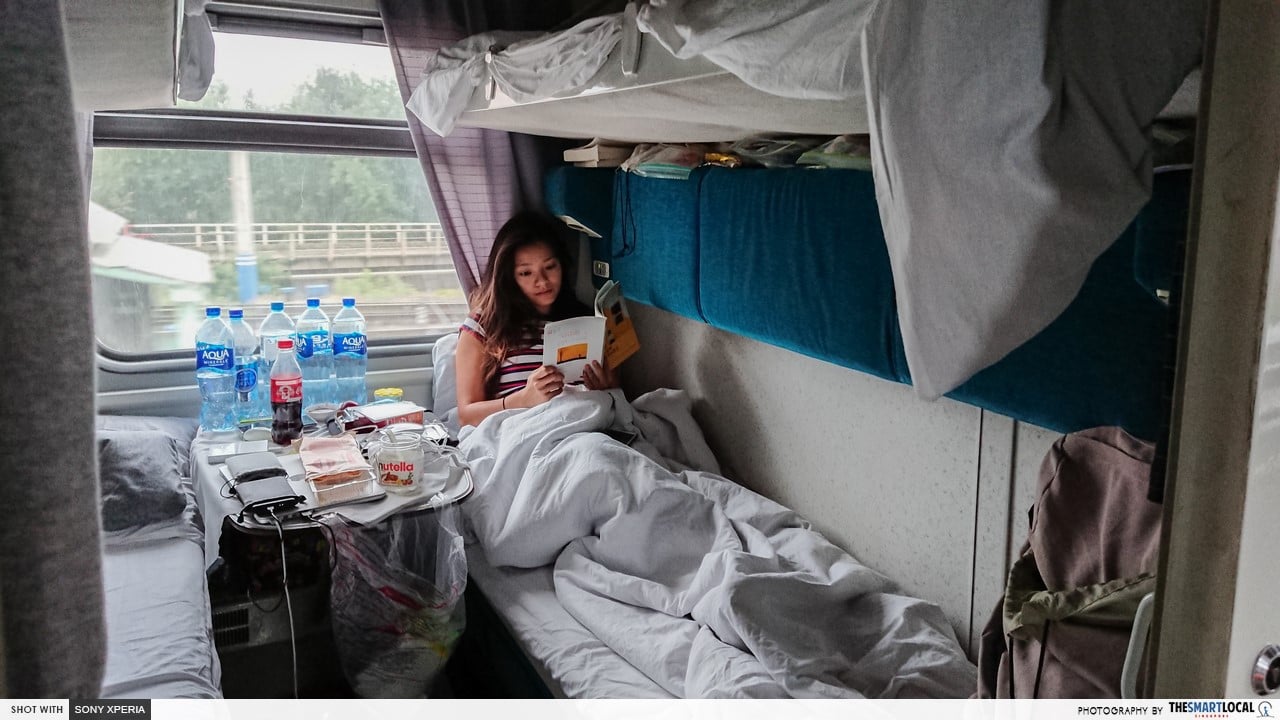
As mentioned earlier, the 2nd class cabin has 4 beds. You can either fold the bottom bunk beds up to make them into sofas or keep them down throughout your journey. They are narrow but not hard; soft enough not to give you backaches after a night’s rest.
The room although cosy has a pretty tight space and all your baggage will have to fit under your bed. It’ll be better to bring a backpack along, rather than a suitcase as the latter might not be able to fit.
For safety and privacy, the doors to each cabin can be locked. There is an extra hidden safety box hidden under the lower bunk too – although this does not come with a lock. To be ultra-cautious during this 7-day journey, we’d recommend using a traveller’s pouch, which is a thin pouch that fits snugly under your shirt, that’ll keep your valuables close by at all times.
There are 2 communal toilets with a sink and a toilet bowl each, and 1 hot water dispenser in every carriage. Visit the toilet before the train stops – toilets are locked at every stop and this can be particularly agonising if the train is stalled for 30-40 minutes.
3. Once you’re on board, sit back, relax, and enjoy incredible views
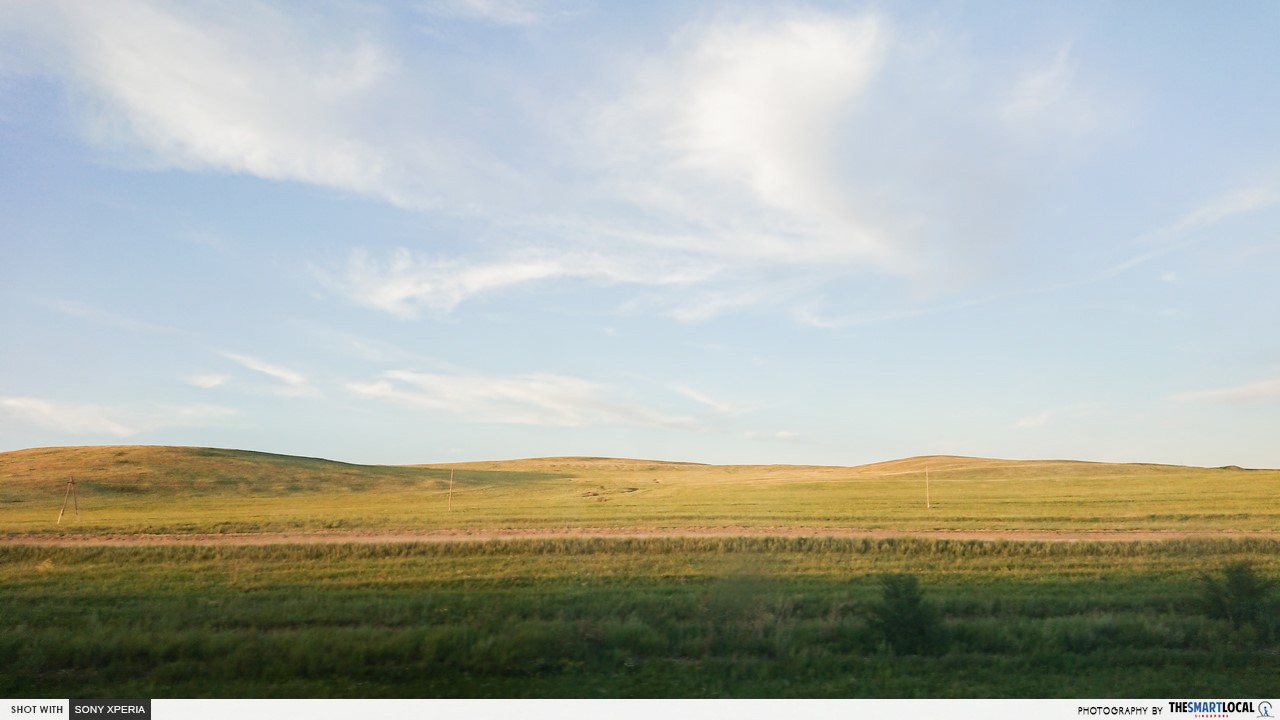
Miles and miles of pastoral scenery
Sights seen out the windows of the train can’t be all captured through the lens of a camera – all you can hope for is to witness the magnificence yourself with your own eyes.
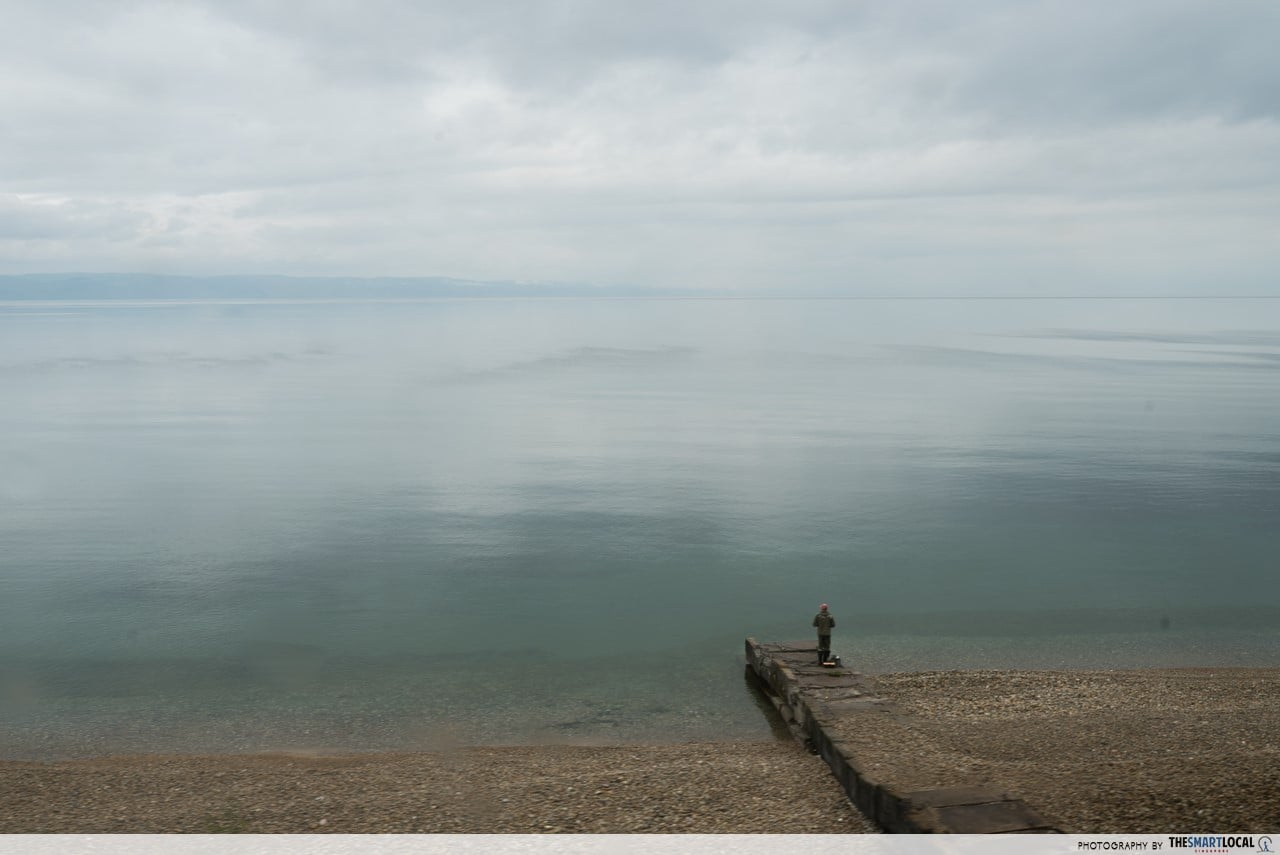
Lake Baikal – the largest, clearest and deepest lake in the world
If you’d like to take a break during your journey, Irkutsk, with its main attraction of Lake Baikal is a great place for a stopover. There are a bunch of things to explore in the area including visiting Olkhon Island, which sits in the middle of the magnificent lake.
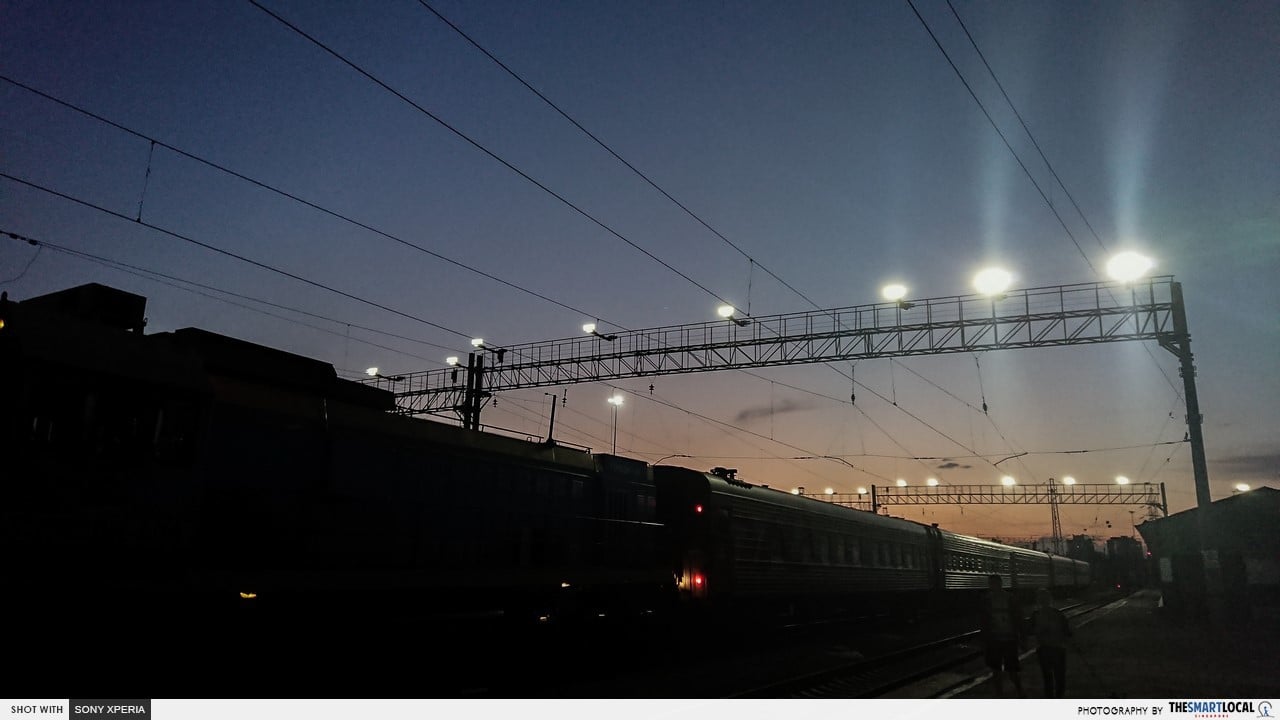
Passing through 5 time zones, you lose all track of time on the Trans Siberian. On some days, the sun rises at 3am and sets at 10pm. Wildflowers bloom everywhere, and you’ll see plenty of poppy fields as well as an abundance of lavender blooms.
On this train, you’ll want to sit by the window and just blank out for a few hours, watching nature and small Russian villages pass you by.
4. Food on the train
There’s a dining cart that latched on to the train for travellers to dine at. However few people actually eat here as the food can be pretty expensive. It’s better to bring along your own supplies for meals instead. There’s hot water available should you want to cook up some good ol’ cup noodles.
5. You can take showers, but only “illegally” and at a price
We found out during our journey that each first-class cabin carriage had a shower cabin, but it’s usually reserved for the train staff. To use this facility, we had to convince the staff and pay them 150 rubles (~$3.50 SGD).
Don’t use it every day – the train staff won’t be pleased because water is very precious on the train! Try to take a maximum of 2 showers during your 7 days.
Traveller-tip: Bring along an S-hook for bath time as there isn’t any space to place your toiletries.
6. The Trans Siberian will make 38 stops in total for you to buy food, each 10-40 min long
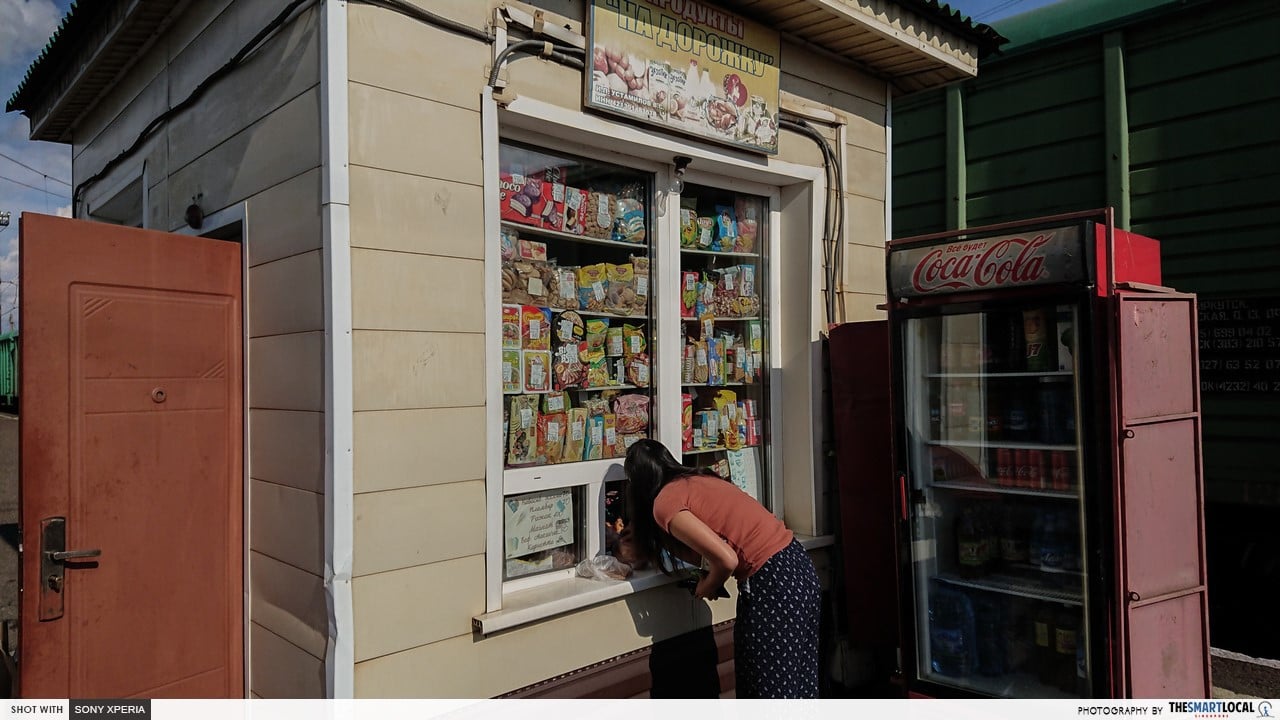
Almost every stop will have a “mama-shop” for you to buy snacks from
The train makes about 38 stops along the way. Some stops are as short as 10 minutes, some as long as 40 minutes (besides the stop at Manchuria, which is 3 hours long). There’s a timetable in the train that indicates the duration of each stop, so make sure you check before you leave your carriage every time.

Russian vendors might be on standby at some stops to sell food. But from what we tried, it’s better to save your money as the food can be cold and soggy.
Pro tip: make sure you buy plenty of bottled water – you’ll want to hydrate yourself well throughout your journey.
7. Important: Don’t panic when you get chased off the train at the Manchurian border
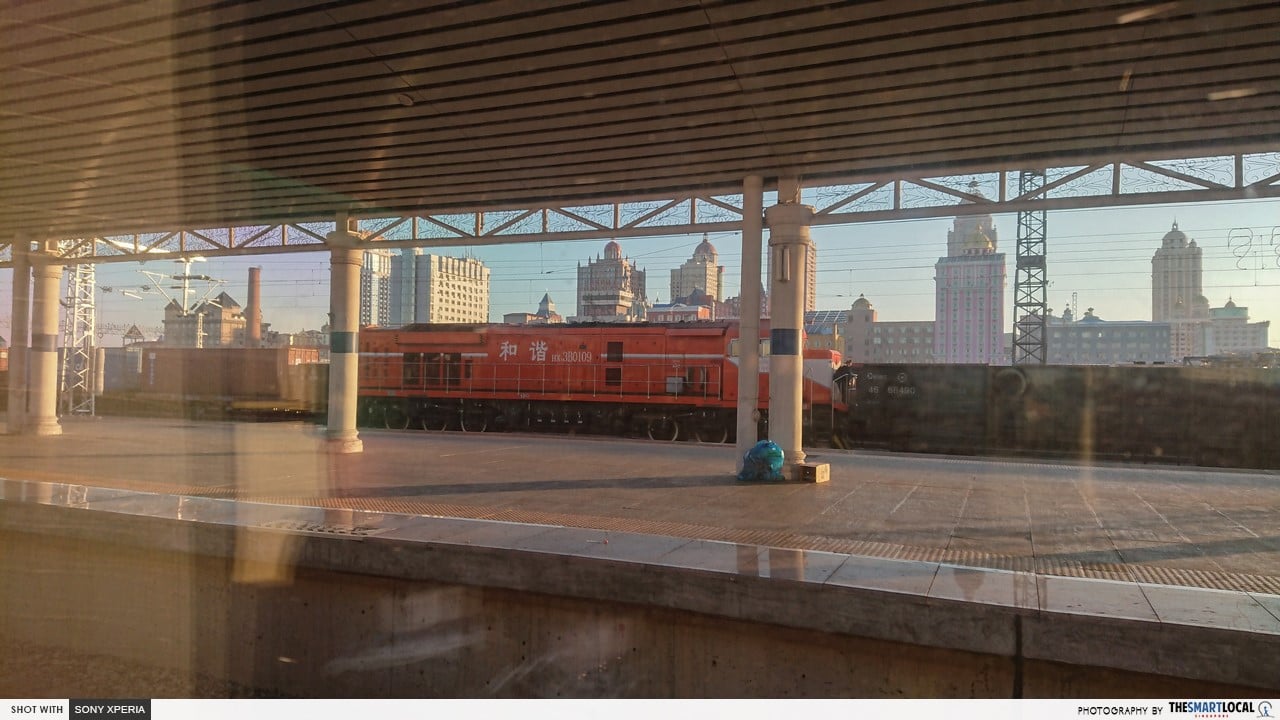
A particular daunting experience we had was at the Manchurian border – we were awakened by the train staff at 4AM and our cabin was thoroughly searched by the Russian authorities before they took our passports and physically chased us off the train.
We weren’t told beforehand, but this is the only stop where the staff will ask you to get off the train. If you don’t speak Russian, you most definitely won’t be able to understand them. Don’t panic; make sure you get off with your valuables and money as you’ll be stuck here for roughly 3 hours.
The delay is because the train’s wheels have to be changed to fit into the tracks of the Russian railway. Whilst waiting, check out the small cafe that sells bread and soup in the immigration building. About 500 rubles (~S$11.50)/pax will definitely come in handy for breakfast in the cafe.
8. There will be a decent restaurant cabin after the Manchurian border
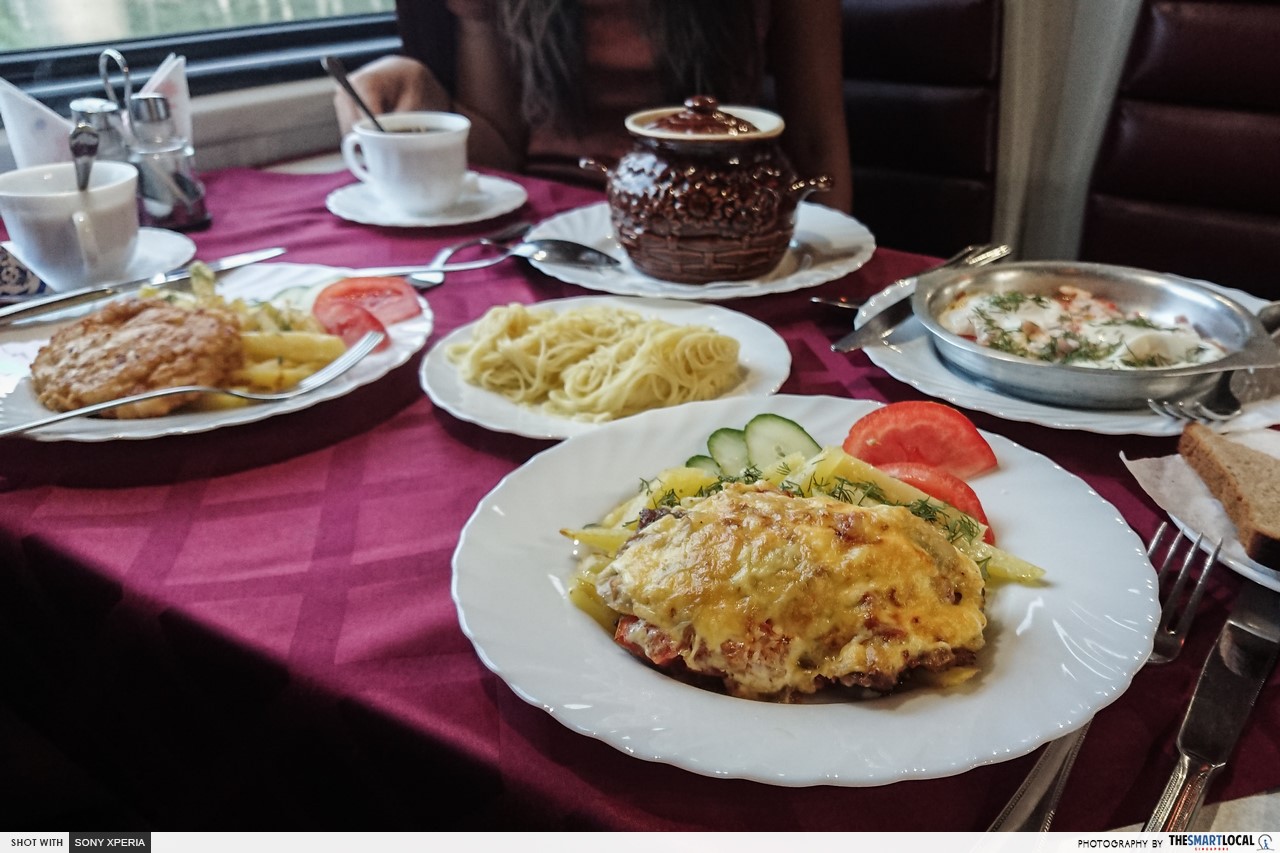
After the Manchurian border, a Russian restaurant carriage will be attached in the middle of the train. This is the only communal area of the train, so make friends when you’re here! If you come across locals who can speak English, you’re in luck – they’ll be great trainslators (get it?) for you because the train attendants only speak Russian.
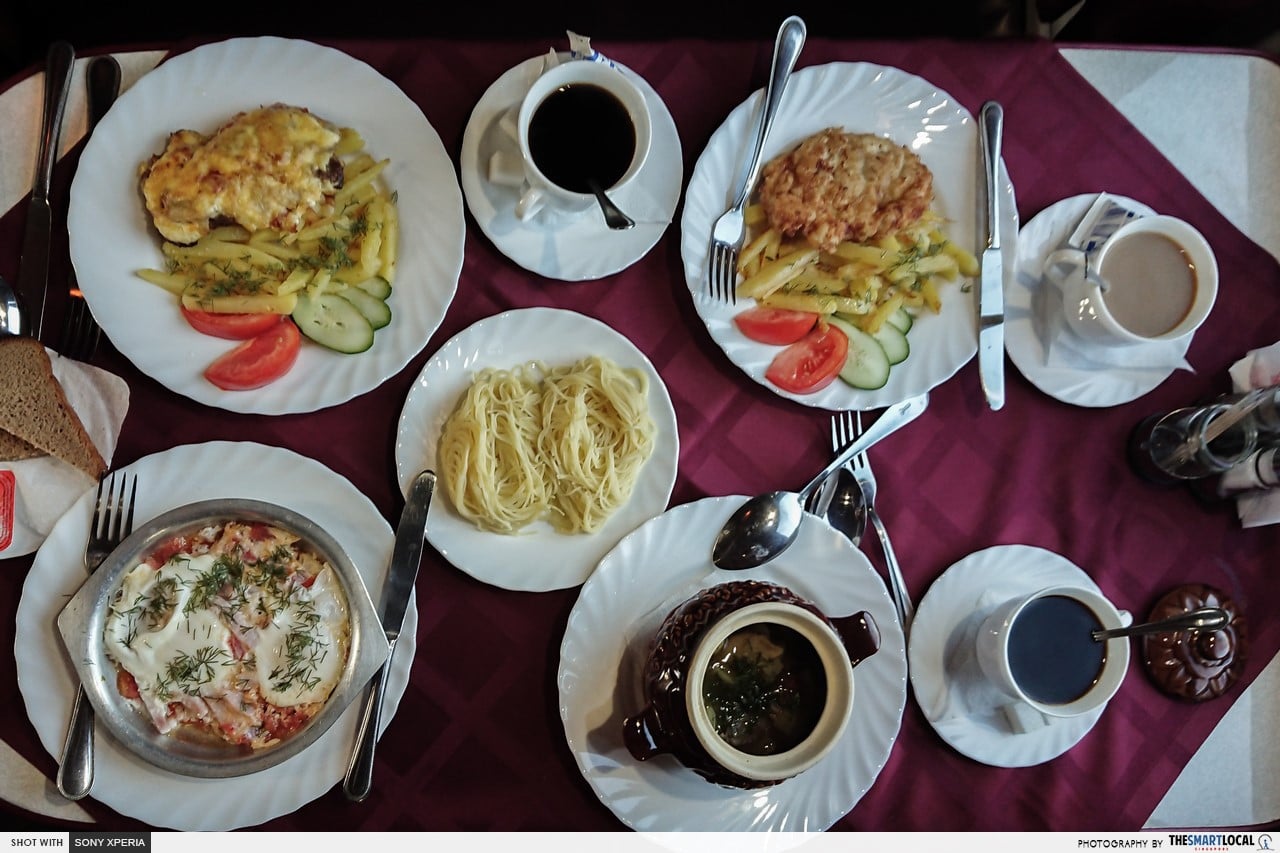
The menu in this carriage is in both English and Russian, so that helped heaps for every meal in the train. Our favourites were the Crispy Pork Schnitzel (400 rubles; ~S$10) and Beef Medallion (600 rubles; ~S$15), served with potatoes on the side.
The pork tasted like breaded pork cutlets and the medallion was like a juicy burger patty with tomatoes, mushrooms and herbs inside.
Finally, you’ll be in Moscow
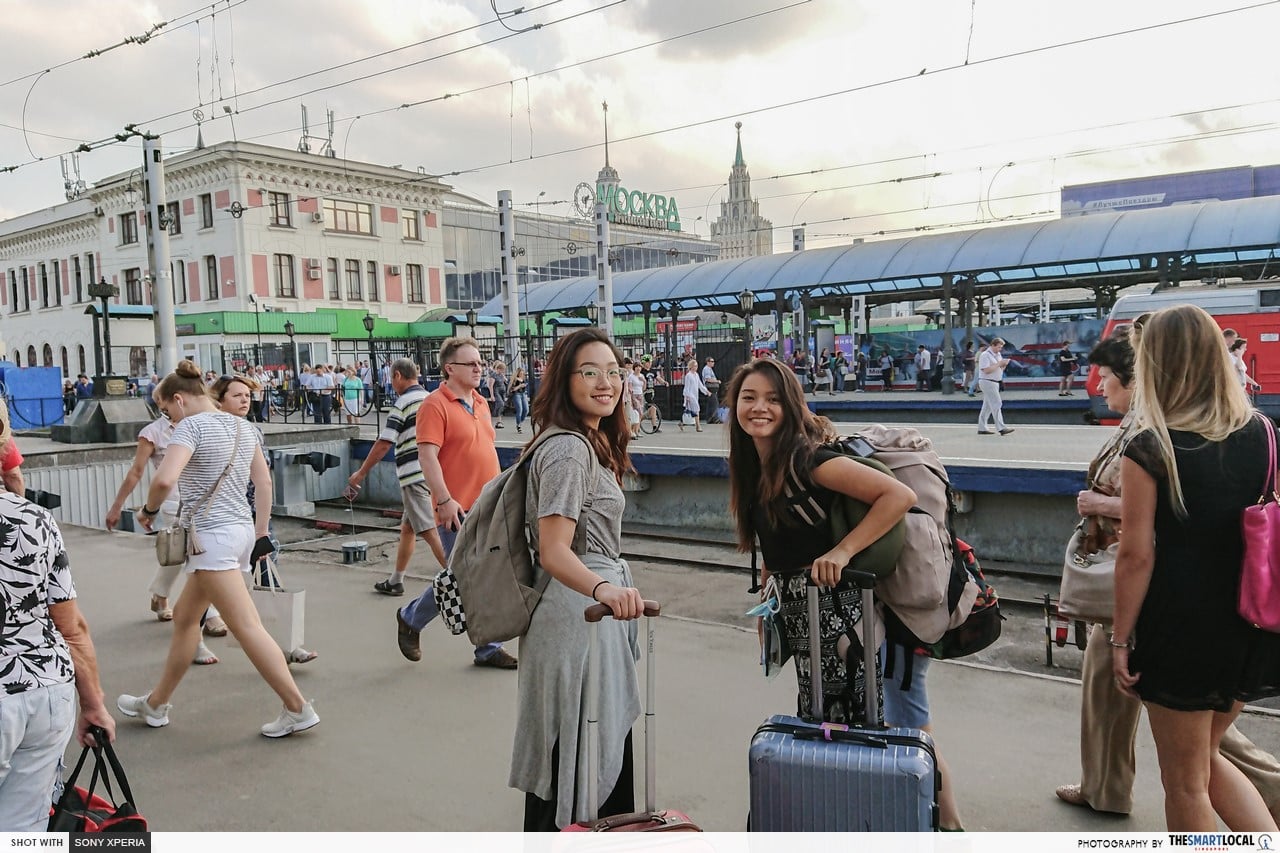
Congratulations, you made it to the heart and soul of Russia! After spending 7 days on the train, it’ll feel almost surreal to step back into civilisation. But this is where your adventure in Russia begins – and if you’re looking to make the best out of your time in Moscow, you can check out our guide on the most whimsical things to do in Russia.
My personal experience on the this rail trip allowed me to chance upon people with the most interesting life stories to share. Like an Irish professor who teaches in universities around the globe, a British couple who were travelling the world together, and a daredevil man who crossed from Cambodia to Vietnam on a $140 motorcycle.
Most importantly, I realised that the world is connected geographically by all these train tracks – and spiritually, we’re all connected by wanderlust and the desire for adventure.
Total transport cost from Beijing to Moscow: S$800
Total transport cost from Singapore to Moscow: S$1560
From Moscow onwards, Europe travels are easy. Just look for any connecting trains into the region and set off in trains and buses! The EU zone usually does not require passport checks when you travel by land, and that’s the most convenient thing about roaming about Europe.
Capture fleeting memories with the Sony Xperia XZ Premium
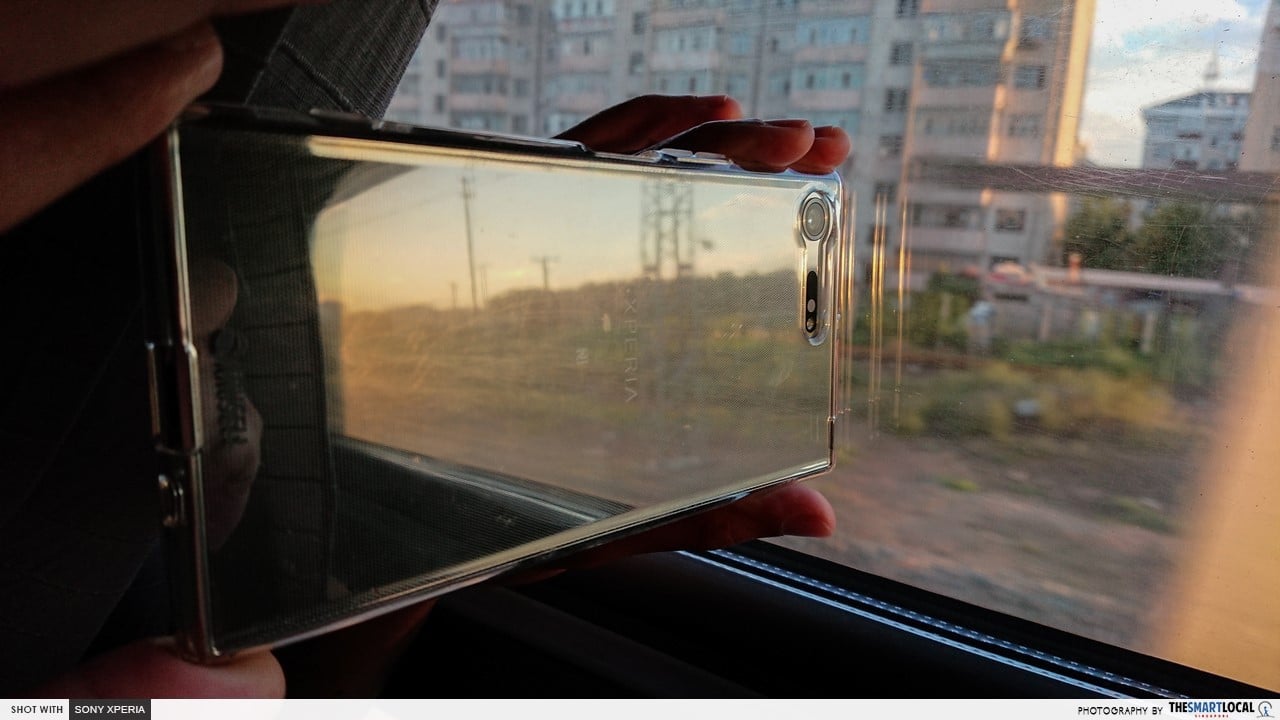
Most of the pictures on this article were taken on the Sony Xperia XZ Premium, our trusty smartphone companion that documented our entire journey on the Trans Siberian. With its Predictive Capture function, we could take crisp photos of sceneries that we passed by on the train – and manual control over its shutter speed also helped to capture the best views in an instant.
With its sleek and light body, fast charging and camera quality equivalent to a DSLR, we give this camera a stamp of approval for any travel enthusiast to consider. Why lug around a smartphone and a bulky camera, when you can get the best of both worlds in one single device?
Find out more about the Sony Xperia XZ Premium
This article is part of a series in which the TSL team travelled from Singapore to London on train in collaboration with Sony Mobile.